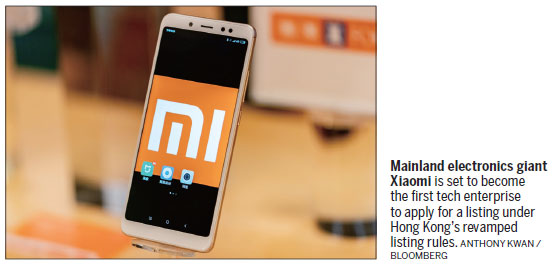Tech stocks rush - it all boils down to competitiveness
It has been widely reported that many mainland technology companies, notably mobile phone maker Xiaomi, are seeking to raise capital on the Hong Kong Stock Exchange following the change in the rules allowing dual-share listing.
Undoubtedly, these enterprises would be promoted by their respective sponsors and underwriters as technology innovators so that their shares could be priced at much higher earnings multiples than what they actually were.
Such publicity would most likely whet the appetite of many investors. But before jumping onto the technology bandwagon, investors should ask if they are buying shares of these companies for their innovative design capability or their manufacturing prowess.
Like many smartphone manufacturers, Xiaomi is best known for its price competitiveness against industry leaders Apple of the United States and Samsung of South Korea. Apple, which doesn't produce any of its products, excels in designing and developing products that consumers want, allowing the company to charge a high premium that consumers are willing to pay.
As a result, Apple and Samsung have together secured a lion's share of the combined profits generated by global sales of smartphones. What's more, they have the innovative capability to create new markets for their products.
In contrast, other phone manufacturers are competing with each other mainly on pricing. The only way they can widen their profit margins is to control manufacturing costs, which is difficult to do because they don't have control over the cost of components sourced from various suppliers.
A senior executive of Xiaomi was reported to have scoffed at investors' obsession with profit margins, saying that it was of little concern to his company which was happy with a 5-percent return on sales. As such, the company's growth will have to be generated by increased sales in the domestic market and developed economies where consumers cannot afford Apple or Samsung products.
That's the business models adopted by most manufacturing companies whose shares should be priced differently from those of technology companies.


